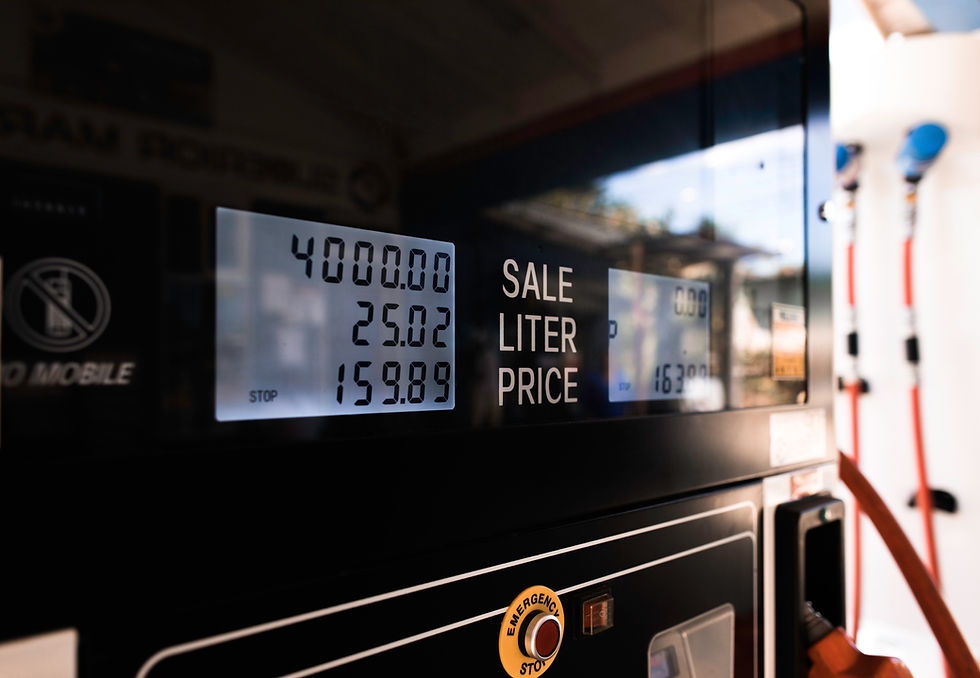10 ways to Save Money on Gas in 2022
- AutoMahnTic

- Apr 11, 2022
- 3 min read

With the gas prices rising, you may be looking out for some ways by which you can save gas. A few small changes in your driving and vehicle maintenance practices can help you save money by reducing your gas consumption. With this goal, here are some tips by which you can save gas:
1. Be Smart about the Gas and Brakes

Speeding can increase fuel production. The gas mileage will be lessened at higher speeds (50 miles per hour), which can cost you an extra amount per gallon.
Not only that but suddenly applying brakes can waste a lot of fuel too. This is why you should cruise slowly towards the red light or downhill.
2. Plan the Best Route

Does taking a shorter route always guarantee less gas consumption? Well, that is not exactly the gas. Some lengthier routes may be more fuel-efficient as they can avoid traffic, construction, and congestion.
Highway and stop-and-go traffic can lower your gas mileage so it is recommended to use some map app or Google maps to choose roads where you can drive your vehicle at a steady speed and avoid any sort of traffic or stoplights.
3. Stop warming up your car

Modern cars usually require a minute to wake up. Warming up your car more than that is not needed. We understand that mornings are cold but if you let your car warm for a longer period, then your fuel economy will suffer leading you to spend extra money at the pump.
4. Properly Tune-Up your Engine

Maintenance of your vehicle and fixing a problem can improve its mileage by 40%. You should know when your car should need a tune-up. That will be dependent upon the age and the model of the vehicle you drive. You can get the idea from the car’s manual. Usually, newer cars need inspection after 20,000 to 30,000 miles covered.
5. Properly Inflated Tires

The tires can lose pressure with time so make sure they are properly inflated. Get them checked for at least a month. You can check your car’s optimal PSI rating through the car manual. Usually, it is around the 30 to 35 PSI range.
6. Avoid Excessive Idling

Newer cars engines stop automatically durig idling. This was done to save fuel at red lights which takes about 45 to 120 seconds while starting the cars require only 10 seconds of gas. Turing off engine at red lights is not recommended for older cars rest you can turn off your engines to save your gas.
7. Use the Recommended Grade of Motor Oil

You should use a motor oil that matches with your vehicle manufacturer's specifications and fulfil its requirements and if the automaker suggest change it per Edmunds. By this you can enhance the gas mileage by 1 to 2% according to the U.S. Department of Energy. When your are buying the motor oil make sure it has the words “Energey Conserving”. This will ensure that it contains friction reducing additives.
8. Do a gas run earlier in the week

Gas prices tend to be a little cheaper during the beginning of the weeks around Monday through Tuesday. The prices go right back up when going to the end of the week into the weekend since more people may travel more during these times. This is also true during holidays the prices usually are above normal, so try to plan when you fill up at the gas station in order to save every penny you can.
9. Right Usage of Air Conditioning

Right usage of air conditioning can be a little complex. For saving the fuel, it is recommended that you keep the windows down and turn off the AC when you are in town. When you are on a highway the aerodynamic drag due to the open windows would nullify the effect of the air being off.
10. Removal of Excess Weight

By losing an additional 100 pounds in your vehicle, you can improve the mileage based upon the extra weight compared to the vehicle’s weight. The effect is not that much dominant in smaller vehicles.
















Commentaires